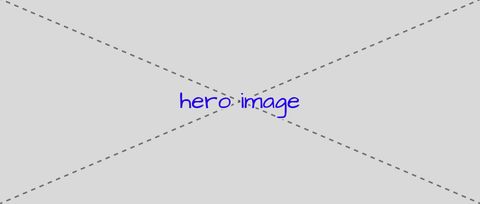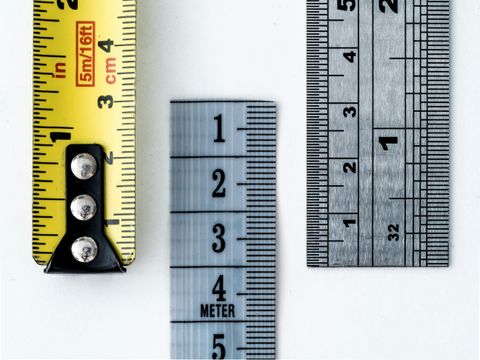For more, you can access
CSS Working Group meeting minutes
on the W3C mailing list archive.
That’s also a good place to see
the agenda for upcoming meetings.
Regular meetings happen every Wednesday,
with the agenda generally sent one day in advance.
This post highlights updates from:
Note:
This is part of a series
providing updates around my work
on the CSS Working Group.
These contributions take a lot of time and effort.
If you’re interested in supporting
our open-source CSS work,
consider becoming a GitHub sponsor,
or contributing to our
Open Collective.
Container queries & conditional rules
Container Queries have officially moved
out of the CSS Containment Module, and into
CSS Conditional Rules Module (Level 5).
This is the same specification module
that defines the @media and @supports rules.
Both levels 4 and 5 are currently written as ‘diff specs’ –
only showing changes from the previous level,
rather than the entire specification.
Level 4
defined the @supports selector() selector-support feature query,
and is already a
Candidate Recommendation:
By publishing a Candidate Recommendation,
a working group is expressing
that it considers the specification complete
and that it has resolved all known issues.
—The CSS Standardization Process
It’s a bit strange to me
that it would still be treated as a ‘diff’,
with the generic
/css-conditional/ url
still pointing at level 3 –
but these things happen.
The spec process is not always simple and linear.
Just to make this web of CSS modules
even more confusing:
media queries also have a distinct
Media Queries module.
That module defines what media features can be queried,
while the Conditional Rules module
only defines the at-rule we use inside CSS stylesheets.
A new preference-query API
Media Queries Module Level 5
defines a number of
user preference media features,
which have been around for a while now:
prefers-reduced-motionprefers-reduced-transparencyprefers-reduced-dataprefers-contrastprefers-color-schemeforced-colors
One of those queries is not like the others,
and you can tell the difference from the name.
The forced-colors setting
is the only one enforced by browsers –
all the others are ignorable.
If we (as authors) never query the user preference
for ‘reduced motion’,
it will have no effect on our site.
Users can generally change these preferences
at either the operating system level,
or inside their browser –
depending on the OS, browser, and setting in question.
But at this point,
there’s no way for users to change their preference
for a specific website,
and save that change across multiple visits.
We can work around that
by individually providing (for example) light/dark toggles,
and then saving the choice
to local storage or a cookie.
But returning visitors will still see
a flash of their global preference
on page-load,
before our JavaScript kicks in.
Wouldn’t it be nice
to have a way for users
to change their preference site-by-site,
and have browsers remember their preference?
That’s what the proposed
Web Preferences API
would do.
This proposal gives us access
to update a domain-specific setting
for any prefers-* query, for any user,
and have the browser remember that setting
when they return.
That proposal has been underway for some time,
but last month it was
adopted by the CSS Working Group,
and will be added to
Media Queries Module Level 5.
Relaxed layout containment for size queries
Part of the reason
for moving Container Queries
out of the Containment spec
is a drive to relax the relationship
between these features.
Containment is essential for
making size queries possible –
but the existing breakdown of containment types
defined for the contain property
is not a perfect match for what we need.
Our initial specification
relied on applying size (or inline-size),
layout, and style containment
to all size-query containers.
- Size containment ensures
that the size of child elements
can’t be used for sizing the parent element.
- Layout containment ensures
that child elements
can only participate in the contained layout,
and are not able to impact layouts
higher up in the DOM tree.
- Style containment ensures
that things like CSS counters
that increment inside a container
can’t change the value of a counter
outside the container.
All three of those are necessary precautions
to avoid looping behavior,
where changes inside a query could impact
the results of the query.
However, over time we’ve found
that only some style and layout containments
are strictly required.
If we don’t need as many restrictions
on a container,
we should remove the ones that aren’t necessary.
Back in March we resolved that
anchor names are not blocked by style or layout containment.
I immediately opened an issue
pointing out that this situation is
not specific to anchor positioning,
and we should consider allowing all positioned elements
to escape layout containment –
and therefore escape containers.
Ian Kilpatrick (a Blink engineer)
followed up by proposing we
no longer apply full layout containment to query-containers,
and only apply an independent formatting context.
Two weeks ago,
presumably as a celebration of my birthday,
the Working Group
resolved to make this change.
Moving forward,
that means it still won’t be possible
to use subgrid across a container boundary,
but it will be possible to do things like:
- Use
baseline alignment across containers
- Allow
absolute and fixed positioned elements
to escape their container
I hope we can continue to
relax the impacts of containment on container queries over time.
At this point, we might not see major changes
to existing features –
but we might find more situations like anchor position
where a new feature should not strictly
follow containment rules
applied by query containers.
Querying partial feature support
There’s been a long-standing issue
with how to handle @support queries
for features that may be partly implemented
in one or more browser.
The most notable case was
browsers extending the gap property
from being grid-specific (2017)
to being supported in flexbox as well.
Firefox implemented that change late in 2018,
Chrome/Edge rolled it out in mid-2020,
but Safari didn’t add flexbox gap support
until early 2021.
For several years,
all the browsers were reporting support
for the gap property,
but only one browser had full support
in all the relevant layout modes.
This is the result of an essential design principle
of the @supports rule:
browsers should not have to maintain a list
of supported features.
That’s been attempted in the past,
but the lists would be to long to maintain well,
and quickly get out of date.
Instead, when a browser parser encounters the @supports rule,
it tries to parse the contents of the query:
- If the query can be parsed as valid CSS,
then the result is
true
- If the parser doesn’t recognize the query content as valid CSS,
then the result is
false
- If the query syntax itself is invalid,
the result is
unknown
(I’ve written about unknown support before)
We can query for @supports (gap: 1em),
and any browser that understands gap: 1em
as a valid CSS declaration will claim support.
But there’s no way to check
that the declaration does what we want in all cases.
This situation has come up again recently,
with browsers adding support for
box alignment in block
and absolute positioning
contexts.
As Michelle Barker mentions in her post:
One thing that concerns me,
is that this seems to fall into that tricky area
where it becomes impossible to test for browser support
and provide fallbacks using a feature query –
much like gap when it was implemented for flexbox.
As align-content is well-supported for Grid and flexbox,
the feature query doesn’t help us here.
—Michelle Barker, CSS { In Real Life }
Back in January,
browsers agreed to
maintain a short list of these situations,
and provide named queries
in specific cases.
To make this work,
it has to be a tool we resort to rarely,
in a way that is coordinated
across all the major browser engines.
The recent update here
is that we’ve agreed on a syntax –
@supports named-feature(<keyword>) –
and our first feature keyword:
align-content-on-display-block.
Once browsers implement this,
you will be able to test:
@supports (align-content: center) {
}
@supports named-feature(align-content-on-display-block) {
}
What’s up with CSS masonry?
If you skim through the minutes
from our July meetings you will also find
a number of updates
related to the CSS ‘masonry’ proposals.
WebKit
and
Chrome
have two competing visions
for how masonry layout
ought to work in CSS.
WebKit wants masonry to be part of grid layout,
and Chrome wants to keep them distinct.
The former leads to grid properties
that behave slightly different in different situations,
while the latter means duplicating
a number of properties that would otherwise be identical.
I don’t have strong feelings about this,
or strong use-cases for masonry –
but for a second there, it seemed like a hot debate.
Both teams posted the competing proposals,
people ran surveys on social media
to get developer feedback,
and then… nothing.
So what’s happening?
You might remember,
a similar thing happened last year
with two different proposals for anchor positioning.
Rather than choosing one or the other,
there was an attempt to merge
the best of both.
That took some time,
but the resulting feature
is much more powerful and usable
than either of the initial proposals.
The work paid off.
In this case,
we can’t fully have it both ways.
Masonry will either be part of grid layout,
or it will have to be separate.
But in many ways,
we’re taking the same approach:
Chrome is opening issues
to show where their masonry might
conflict with existing grid features,
and WebKit is looking for ways
to minimize those conflicts.
Depending how those conflicts are resolved,
we’ll have a much better sense
if the masonry-in-grid approach is viable or not.
And then we will (hopefully)
not be debating how the feature works,
but only how it is ‘spelled’ in CSS syntax.
Maybe kicking that can down the road
will give us more information to work with.
Also keep an eye on…
- Issue #10618:
The
calc-size() function
and interpolate-size property
will finally allow us to
transition or animate to and from auto sizes!
I don’t have much more to say
about this specific issue,
but I’m keeping a close eye
on the overall feature.
- Issue #8320:
One of the big frustrations
with view transitions
is the need to name every element involved.
While there’s no resolution here yet,
there’s a lot of effort going into
solving this problem.



